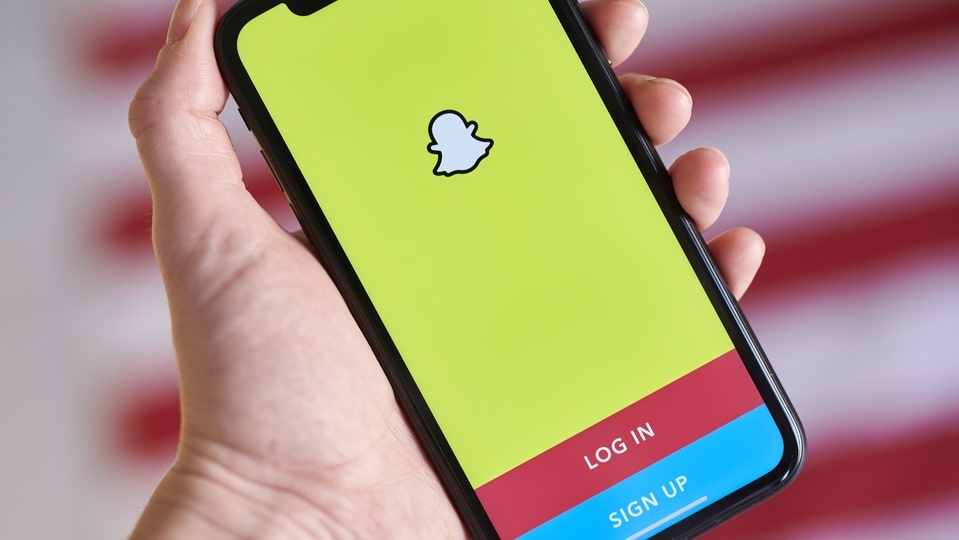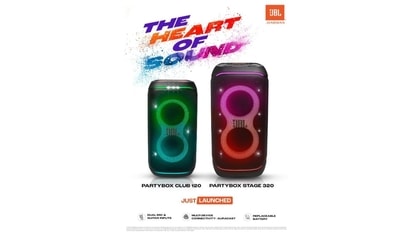Snap, rivals power AR advertising boom to woo homebound shoppers
More than traditional types of marketing such as magazine and television spots, customers who engage with augmented reality campaigns are actively choosing to explore a brand.

When American Eagle Outfitters Inc.'s in-person sales took a hit from the Covid-19 pandemic last year, the retailer decided to make a bigger bet on an emerging tool for reaching customers: augmented reality.
Suffering from declining sales and mulling store closings, the retailer turned to Snap Inc.'s popular Snapchat video-sharing app to connect with teenagers who could no longer frequent the malls that make up American Eagle's main business.
The retailer of casual polo shirts, blue jeans and trendy swimsuits launched a virtual pop-up holiday shop on Snapchat, which allowed users to browse from among 15 to 20 pieces at a time. As shoppers physically moved their phones around their own rooms, they were also exploring different areas of the digital store, where they could tap on certain products to learn more about them and create a wish list. Then they were prompted to go to American Eagle's website to finalize the purchase.
By the end of the run, American Eagle had sold $2 million in products from the store and had 50 million engagements. The sales were a drop in the bucket for a company that closed the last quarter in 2020 with $1.3 billion in revenue, but represented a new way of reaching younger customers.
“It was really a light bulb that, wow, this is a new way to consider not just engaging with Gen Z but also shopping with Gen Z,” said Craig Brommers, American Eagle's chief marketing officer. “I think we'll see an acceleration of this trend in the months and years ahead.”
The Covid-19 lockdowns and quarantines that forced consumers to turn to websites for everything from food and household goods to clothes and office suppliers provided an opportunity for new AR advertising projects. Worldwide e-commerce sales grew from $3.35 trillion in 2019 to $4.28 trillion in 2020, according to estimates from EMarketer.
Bolstering that trend were advertisers who shifted their spending from traditional advertising mediums to social media platforms. Social media advertising revenue grew 16.3% to $41.5 billion last year, representing nearly a third of all digital advertising, according to the Interactive Advertising Bureau.
“This is the next evolution of where e-commerce grows,” said Mark Shmulik, a senior technology analyst at Bernstein. “It just creates more categories that will enable me to either start or continue buying online that otherwise I might have felt less comfortable doing because I couldn't kind of try it on.”
Though Facebook Inc., Pinterest Inc. and ByteDance Ltd.'s TikTok are rolling out new ways to market using AR on their platforms, Snapchat is well positioned to work out the kinks of the augmented reality advertising boom. The app, which boasts some 280 million daily active users, first captured the attention of the under-24 set with disappearing videos and photos that could be enhanced with silly automated effects such as funky hair accessories or the ability to turn one's face into a cartoon character.
The company on Thursday introduced a slew of new services and technology upgrades to bolster its augmented reality-powered shopping experiences. Among the changes Snap is implementing is improving the visibility of its Scan feature, which works with industry partners to allow people to use the app's camera to identify everyday objects and receive shopping recommendations for clothes.
The number of Snapchatters engaging daily with augmented reality “lenses” grew more than 40% last quarter, outpacing the daily active user growth by more than 80%. While regular video advertisements still drive the majority of Snapchat's revenue, augmented reality is increasingly becoming part of its growth strategy, according to Snap Chief Business Officer Jeremi Gorman.
“The combination of that immersive behavior as well as that convenience of augmented reality are really critical for marketers,” she said. “This is AR's moment. You have this huge community of people utilizing AR wanting to engage with it every single day and it's a wide-open space for marketers.”Frito-Lay Inc. last February aired a Super Bowl spot that asked viewers to point a phone's camera lens in the Snapchat app toward the screen to unlock a free bag of Cheetos Crunch Pop Mix. Earlier this year, Amazon.com Inc. opened a new hair salon that uses augmented reality to allow customers to virtually try on hair colors and point their phones at products to learn more.
NYX Professional Makeup, Lexus, Gucci and other brands all pushed out new immersive advertising experiences, allowing shoppers to explore their products without having to step a single foot into a store. Companies are launching AR try-on experiences on their own while also turning to platforms such as Snap, Facebook and Pinterest to reach new customers.
More than traditional types of marketing such as magazine and television spots, customers who engage with augmented reality campaigns are actively choosing to explore a brand. Companies that utilize AR marketing are also abandoning older aspirational forms of advertising, based on Photoshopped models in idealized scenarios, in favor of encouraging customers to turn themselves into brand ambassadors.
In turn, those social media users may adorn their faces with a new makeup release or virtually try out a clothing line, and then share the outcome with their friends. On top of that, users who engage with try-on experiences on apps might be less likely to return the products they purchase, potentially reducing costs for companies.
Augmented reality “stimulates the user more than a regular content,” said Antoine Vu, cofounder of the augmented reality design firm Atomic Digital Design. “You become the actor of the content you are listening to or you're watching or learning [from]. You are kind of living the content.”
The technology still has hurdles to cross before it becomes a major advertising strategy, according to industry experts. For starters, augmented reality is most popular among Generation Z, who are roughly between the ages of 10 and 25, and who may be more digitally savvy but lack the buying power of older consumers.
And commerce innovations that might have seemed useful to shoppers who were trapped at home during the pandemic may become less attractive once they feel more free to return to brick-and-mortar stores. AR campaigns are also still viewed among some brands as expensive and onerous to produce.
“The onus is on us to ensure that advertisers are clear that this is no longer an incredibly complex thing to build,” Snap's Gorman said. “It doesn't take a long time. It's not terribly expensive and they can reach their most engaged audience with it.”Innovations in augmented reality will need to evolve if marketers want to extend the moment into a long-lasting and accessible advertising strategy. Most companies that are embracing it so far are beauty, clothing and furniture brands looking to take advantage of try-on experiences.
Industry experts envision more robust adoption of other potential use cases, even for in-person shoppers -- such as labels on products in department stores that prompt potential buyers to use their phones to explore a brand's story in augmented reality. Shoppers in furniture stores could change the wall color to see if a sofa they want matches their decor; restaurants could help diners envision how their food would look spread across their own kitchen tables.
While Snapchat is a front-runner, the competition to sell AR advertising opportunities to brands is heating up. In 2018, Facebook started offering AR-enabled advertising capabilities, which were embraced by brands such as Universal Music Group and Michael Kors. Later, the company expanded AR try-on features to Instagram Shops, where users browse curated collections from brands, and plans to expand that capability to Facebook Shops. The social-media company is currently testing adding AR advertising to its Dynamic Ads service, which lets companies target customers who looked at a product online but didn't buy it.
In addition to Snap and Facebook, companies such as Alphabet Inc.'s Google, Pinterest, and Amazon are also making moves to push into AR-enabled products and services. As tech companies race to bring to market more advanced AR headsets and glasses, they will likely pave the way for companies to embrace even more creative types of marketing campaigns.
Now on a subway ride, “you just see everybody sitting down with their necks down looking at their devices,” said Shmulik. “I think that the next wave is going to be a bit more heads up.”
There are signs that at the very least AR advertising will outlive the pandemic. As the U.S. economy started to open up in late February more Snapchatters posted stories and engaged with the app's interactive map. The following month, more users created new friendships and chatted more with the ones they already had, according to the company. Snapchat is betting that more user engagement on the app will translate into more engagement with AR campaigns.“This is, in my opinion, not a trend that is going backwards,” Gorman said.
Last year, Snap reached out to Zenni Optical, an online-only eyeglass brand, about starting an AR advertising campaign. In October, the company launched a try-on experience with several of its glasses -- from designs wth polka dots to animal-print varieties --- and sample accessories, said Deanna Dawson, head of social media and content marketing. The campaign was so successful that the company put out a Valentines Day experience, which resulted in 1.5 million try-ons, according to the company. Zenni Optical is launching another AR campaign on Snapchat in June.
“We just thought this was really going to be a branding play more than a performance play,” said Dawson. “We were happily surprised.”As for American Eagle, earlier this year the company announced a new augmented reality jeans guide on Snapchat that lets users twist and turn pants in three dimensions. “The new day hasn't just dawned,” Brommers said. “It's here.”
Catch all the Latest Tech News, Mobile News, Laptop News, Gaming news, Wearables News , How To News, also keep up with us on Whatsapp channel,Twitter, Facebook, Google News, and Instagram. For our latest videos, subscribe to our YouTube channel.

























